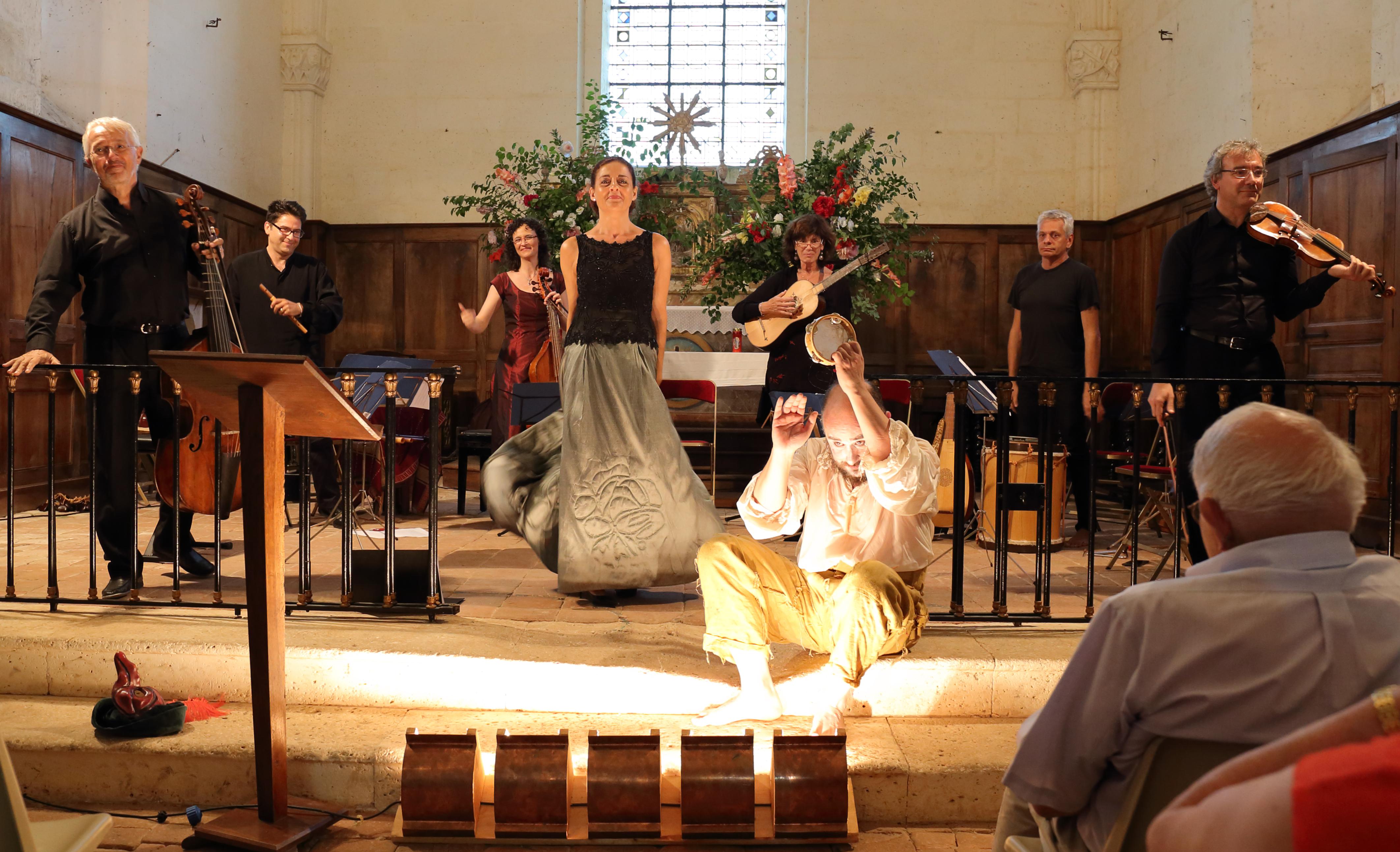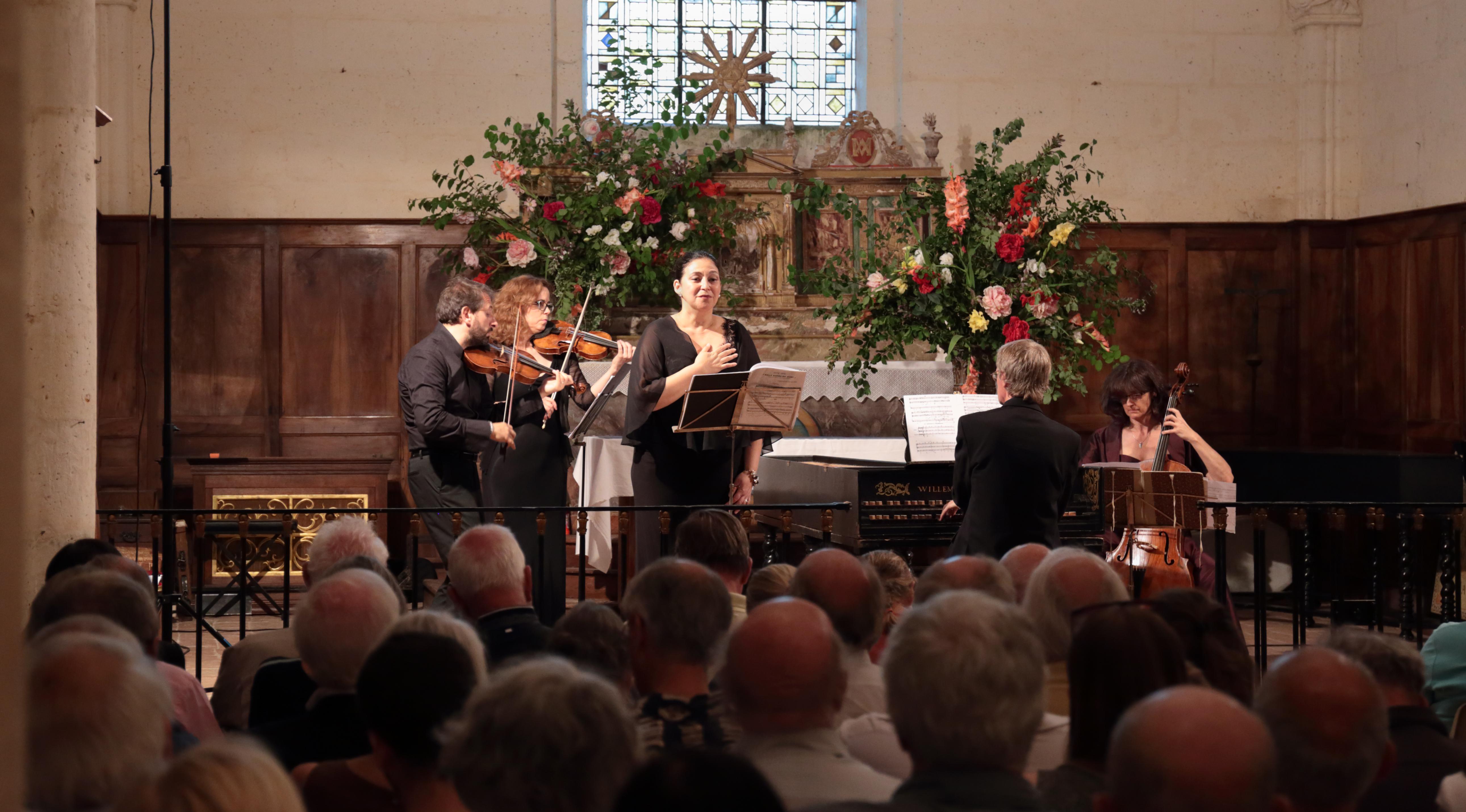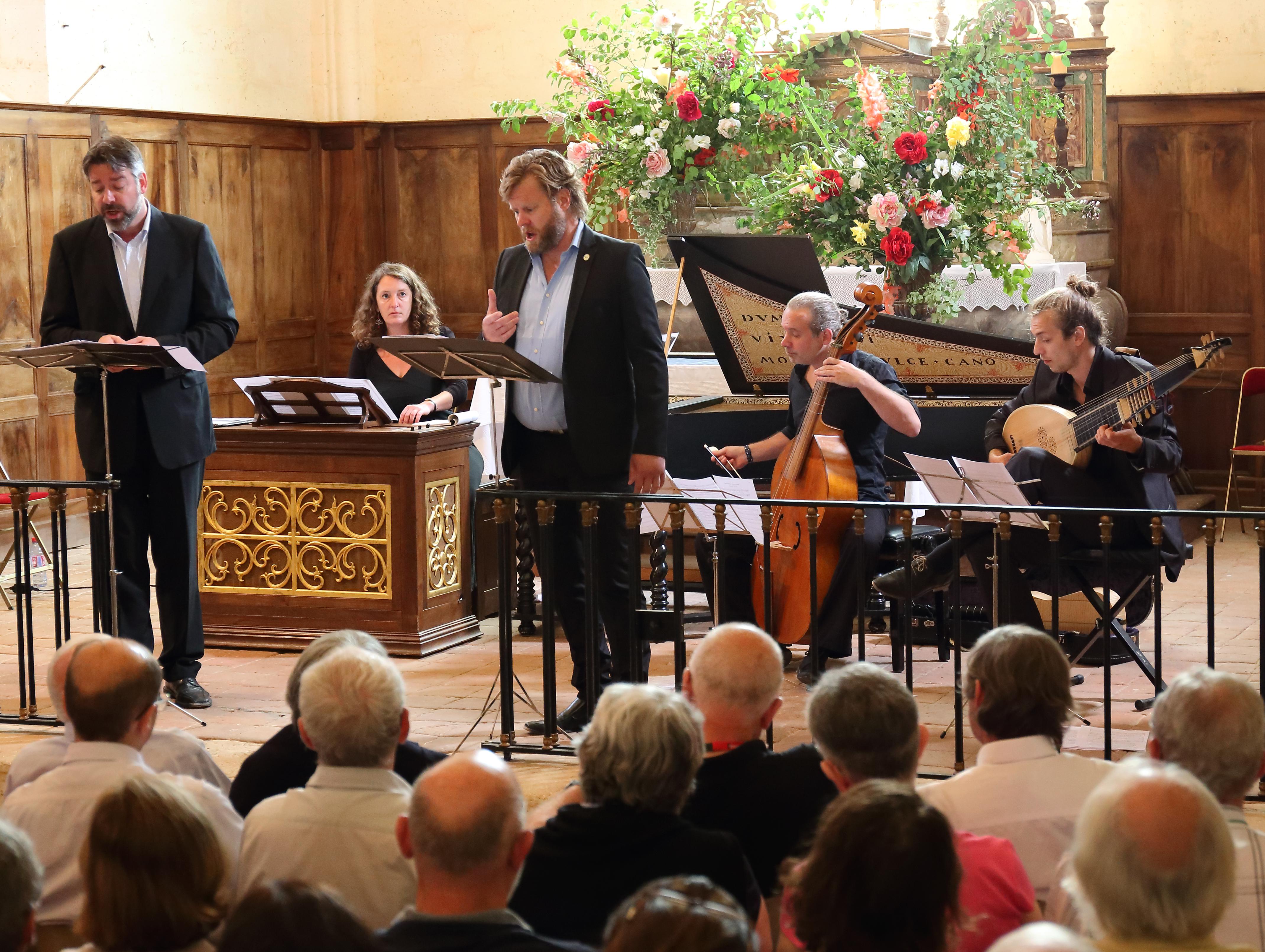Dordogne, France – 28-31 July 2016

Picture a landscape of rolling hills, fields of sunflowers and maize. Intersperse with deeply shaded woodland, sleepy small towns and villages in which the most notable feature is almost inevitably a 12th or 13th century Romanesque church and you have the Périgord Vert, a largely unspoilt area situated in the north of the Dordogne region of France. It sounds an unlikely venue for a festival of Baroque music inspired by one of the great names in early music. Yet in 2016 Itinéraire Baroque reached its 15th edition, still enjoying the benign leadership of its co-founders Ton Koopman and festival director Robert Nicolas-Huet, the festival owing its genesis to the Dutch musician’s ownership of a house in the area.
Itinéraire Baroque may occupy a short space of time, but over four days it packs in a large amount of music. This year it was possible to attend no fewer than eleven events – I missed the final concert – covering a spectrum stretching chronologically from Josquin des Prez to Haydn’s late ‘Nelson’ Mass, stylistically from simple Dutch Calvinist contrafactas of Dowland songs to the splendour of Mozart’s ‘Coronation’ Mass.

At the heart of Itinéraire Baroque is the day that not only gives the festival its name, but also adds an innovative dimension. Each year the Saturday (in this case 30 July) is devoted to a magical musical tour that focuses on short concerts given in five of the historic churches of the region, buildings that in some cases otherwise rarely see the light of day. This year’s audience met early at the church St Cybard at Cercles, a mostly 14th century building, now beautifully restored and of somewhat grandiose pretensions for a community of some 200 souls. There we were regaled with a short Bach organ recital by Koopman (including a lovely performance of the Pastorale, BWV 590; so appropriate to these surroundings) before being split into five groups, each to follow a different itinéraire to the venues, where a short concert is preceded by an introduction to the architecture and history of the building. Of the churches this year that at our first stop, the tiny but beautifully proportioned 12th century St Saturnin at Coutures, turned out to be a perfect gem. It was host to a largely satisfying concert, too, a recital of a group of charming Kraus songs and Haydn’s cantata Arianna a Naxos by the Swedish mezzo Anna Zander and fortepianist Mayumi Kamata, whose strongly characterized performance of the Haydn was marred only by the sluggish tempos at which both arias were taken. We found awaiting us for the second concert an almost equally appealing church in the shape of that at Bourg des Maisons, where a recital of arrangements of lute music on Baroque harp was given by the accomplished young Dutch player Emma Huijsser, standing in for the indisposed Hana Blažíková. The church is especially notable for a ravishing and only recently revealed set of frescos, the earliest of which date from the 12th century, while Huijsser impressed particularly in a highly musical and finely articulated performance of Bach’s Lute Suite in D minor, BWV995. Following a generous break for lunch (well, we are in France, after all!), the next venue on the itinerary was the only non-ecclesiastical one. The lawns of the 15th century Château de Beauregard played host to a recital by Camerata Trajectina, one of Holland’s long-established early music ensembles. I fear a good lunch, the hot afternoon and routine performances conspired to make a programme entitled ‘Dowland in Holland’ less than enticing. For the following concert it was back to church, in this case the rather austere looking St Martin at Cherval, where the La Cetra Barockconsort played a potpourri from Die Zauberflöte arranged in 1793 for flute and string trio by one Franz Heinrich Ehrenfried. Initially the skill with which he coped with the contrapuntal complexities of the Overture intrigued, but interest later lapsed and I fell to musing on the incongruity of a 21st century audience sitting solemnly in a church listening to an arrangement designed to fulfil no more profound a function than provide social entertainment. The final course of this richly diversified 6-course musical feast necessitated only a short hop to St Martial Viveyrol, where the Dordogne-based Le Vertigo gave a pleasant if unremarkable concert based on French music (and Purcell) that might have been heard at the court of Charles II. Unsurprisingly soprano Caroline Dangin-Bardot sounded more comfortable in French repertoire by Michel Lambert (the lovely air ‘Vos mépris), Sébastien Camus and Charpentier than in Purcell’s ‘The Plaint’ and ‘Fairest Isle’.
The festival had opened two days before with a Bach programme given by Koopman and his Amsterdam Baroque Orchestra. The venue was the church of St Martin in Champagne, a building that has its roots in the Romanesque period, as evidenced by the magnificently decorated multi-arched doorway, but that was much rebuilt and enlarged in the 16th century. Sadly, it turned out to have treacherous acoustics and although I tried three different places it proved impossible to hear sufficiently clearly to come to definitive conclusions about the performances. This applied especially to the singing of soprano Yetzabel Arias Fernandez, replacing Hana Blažíková, whose full-blooded approach to Jauchzet Gott, BWV51 and the Wedding Cantata, BWV202 seemed only to exacerbate the inherent problems created by the building, the voice spreading alarmingly in its upper range. Elsewhere Koopman’s long-established and exceptional empathy with Bach’s music could be intermittently appreciated in vital performances of the Orchestral Suite no.1 and the magnificent Sinfonia from the cantata Am Abend aber desselbigen Sabbats, BWV42, but the poor acoustic made this overall a disappointing concert.

The following evening Arias Fernandez appeared to rather better effect in the event at which she was originally scheduled to appear. It took place at Cercles, which played host to all three concerts on 29 July. Performed by La Risonanza under their founder and director Fabio Bonizzoni, the programme was notable for a superb performance of Vivaldi’s trio sonata ‘La Folia’, RV63, a work that can outstay its welcome but one that on this occasion was given with such intensity and sense of fantasy that it gripped the attention from start to finish. Arias Fernandez sang chamber cantatas by Alessandro Scarlatti (the splendid Bella madre), Bononcini and Handel’s well-known Armida abbandonata. While the acoustic suited her lustrous voice better than that at Champagne, I still found her apparent inability to curb its power in the upper range disconcerting. Her ornamentation, too, left much to be desired and like so many singers of Baroque music today she has no trill. Given her approach, it was the big Handel cantata that worked best, Arias Fernandez rising well to its dramatic challenge.
Earlier in the day the Austrian ensemble Vivante had presented a compelling programme of Monteverdi tenor duets and solos culled from the 7th and 8th Books of Madrigals and the Scherzi Musicale of 1632. If the singing of neither Tore Tom Denys nor Erik Leidal displayed truly

Italianate qualities, both proved themselves to be well versed stylistically, with Leidal showing an edge in this respect, being more confident with ornamentation, while it was Denys who won the plaudits for vocal beauty, Leidal’s lower range tending to be a little grainy. I’ve left until last the concert that quite unexpectedly gave me the most pleasure. This was given by the Accademia Strumentale Italiana and consisted of an exploration in words and music of the world of the commedia dell arte. Music by a wide range of composers stretching alphabetically from the ubiquitous Anonymous to Adrian Willaert was linked by a brilliant performance (in French) by the comedian Lorenzzo Bassotto, exploring the humour, pathos and vulgarity of commedia dell arte with immense panache. The instrumental playing was of high quality, with some wonderfully subtle percussion work by Sbibu. And I’ll nominate the vivacious soprano Elena Bertuzzi as my discovery of the festival. She boasts outstanding technique, a lovely vocal quality and moreover is a real personality who knows instinctively how to communicate to an audience. If she can reach the point where she can sing this programme without the aid of music books, she’ll be even more irresistible.
Brian Robins
Photographs: © Jean-Michel Bale (Itinéraire Baroque)
